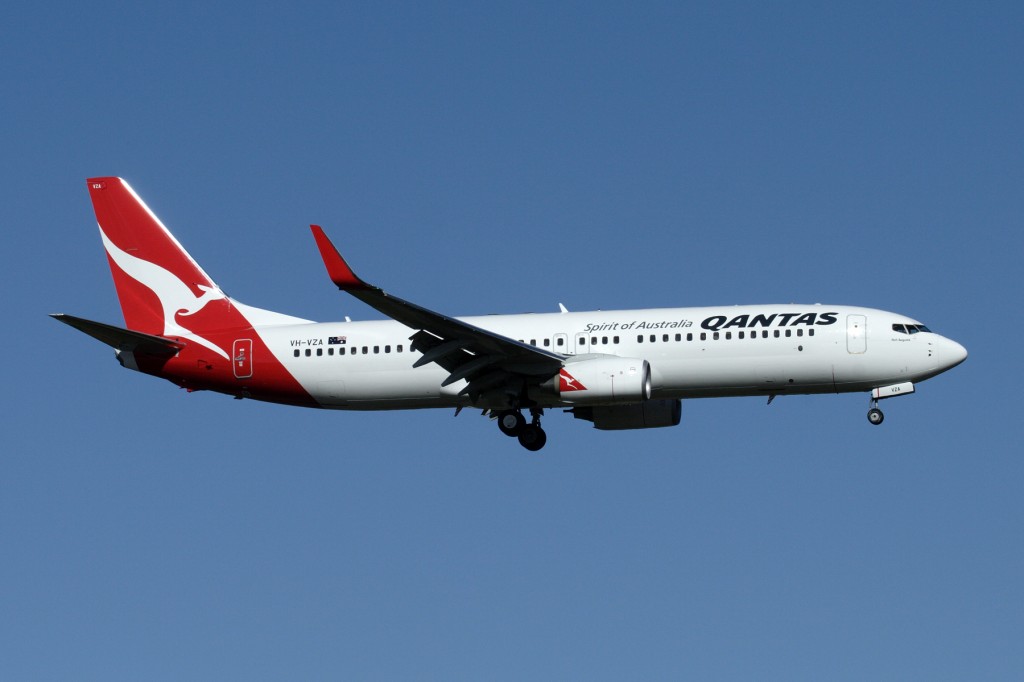Qantas is rolling out inflight Wi-Fi on its domestic fleet

Qantas has revealed that it is rolling out Wi-Fi to its domestic fleet at a rate of around one aircraft per week, with the majority to be complete by the end of 2018. According to the Australian airline, it now has 22 Boeing 737 planes kitted out with the connectivity technology, or more than 30 percent of its 737-800 fleet, with Qantas CEO Alan Joyce partially attributing the “record” Qantas Domestic first-half financial results to the in-flight Wi-Fi program.
“With Qantas Domestic, we’re seeing the benefits of investing to generate margin growth through improvements like Wi-Fi and cabin upgrades,” Joyce said.
“We’re seeing continued capacity discipline in the domestic market, coupled with a product advantage that’s delivering a significant profit share to the group.”
Qantas announced a six-month statutory profit after tax of AU$607 million, up 17.9 percent year on year, on revenue of AU$8.66 billion, up 5.8 percent. Net capital expenditure for the half year was AU$962 million, including capex required for the Wi-Fi rollout, with net free cash flow of AU$772 million as of December 31.
Qantas had announced an acceleration of its in-flight Wi-Fi rollout across its domestic Airbus 330 and Boeing 737 aircraft during its full-year financial results in August, following the completion of its trial along with regulatory approval for the service.
“Our investment in free in-flight Wi-Fi will ramp up from September, as we finish what has been a successful trial and move to an accelerated rollout to our domestic A330s and 737s,” Joyce said at the time.
Qantas had further revealed that it is “waiting for an improved technology that will allow fast Wi-Fi for our international routes”.
The airline commercially launched its free in-flight Wi-Fi in beta mode on-board its Boeing 737 VH-XZB aircraft that travels between Melbourne, Sydney, and Brisbane in early April 2017, with a series of live tests during its first flight seeing speeds between 2.57Mbps and 7.24Mbps download and 0.26Mbps and 0.61Mbps upload.
During initial testing in February, Qantas had connected 140 passengers with an average of 1.6 devices each to the Wi-Fi system at download speeds of between 7Mbps and 12Mbps. Originally, Qantas was aiming to enable access speeds of up to 20Mbps per passenger, with satellite communications service provider ViaSat looking to provide a service-level guarantee to Qantas of 12Mbps at all times throughout the flight once the service leaves beta mode.
Qantas first partnered with ViaSat to deliver the Wi-Fi service using Australia’s National Broadband Network (NBN) Sky Muster satellite service in February 2016. The service makes use of idle satellite capacity as the aircraft travels through Sky Muster’s 101 Ka-band spot beams. A satellite antenna will be mounted on top of each aircraft by Qantas engineers, along with several wireless access points, resulting in similar signal strength for all passengers no matter where they are seated on the plane.
Qantas, which last year also developed an app with GE to cut carbon emissions, in July then announced kitting out a second domestic 737 aircraft with new Wi-Fi technology from ViaSat ahead of eight more gaining the equipment by the end of September. ViaSat’s new equipment is tipped to provide faster speeds and more reliable connections.
Around 80 Boeing 737 and Airbus 330 aircraft are expected to be fitted out with the service by late 2018. Once the rollout is complete, around 15 million customers per year will experience the free on-board Wi-Fi.
Qantas also partnered with Foxtel, Stan, Netflix, and Spotify to allow customers to stream content for free while in-flight. http://www.zdnet.com
